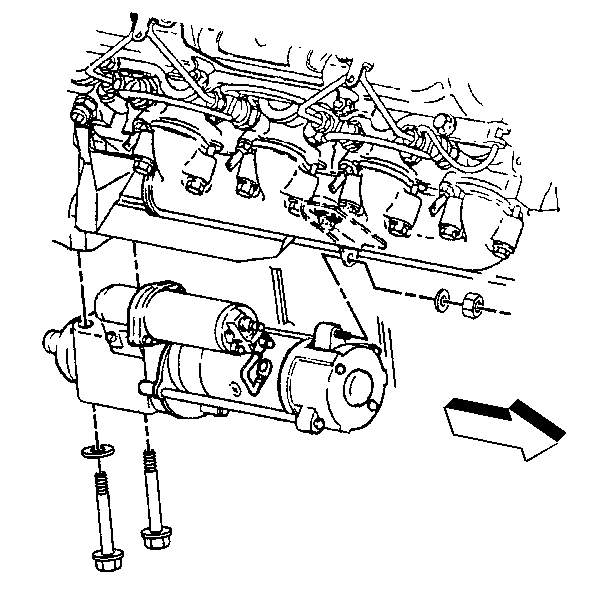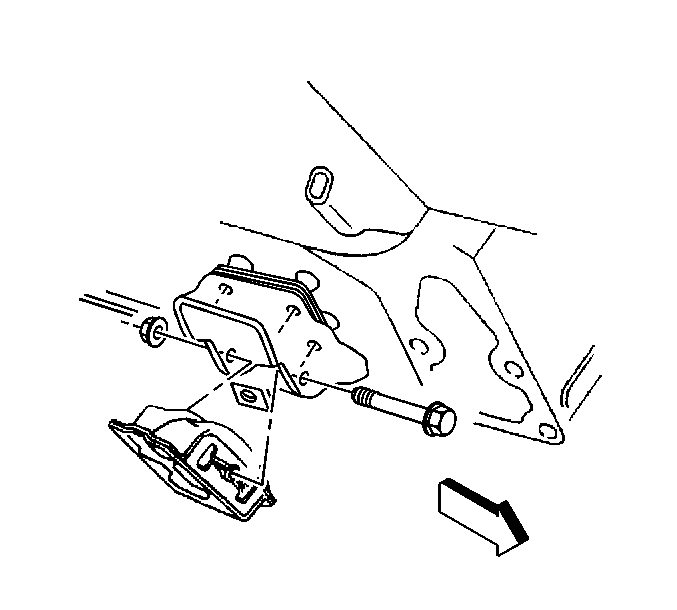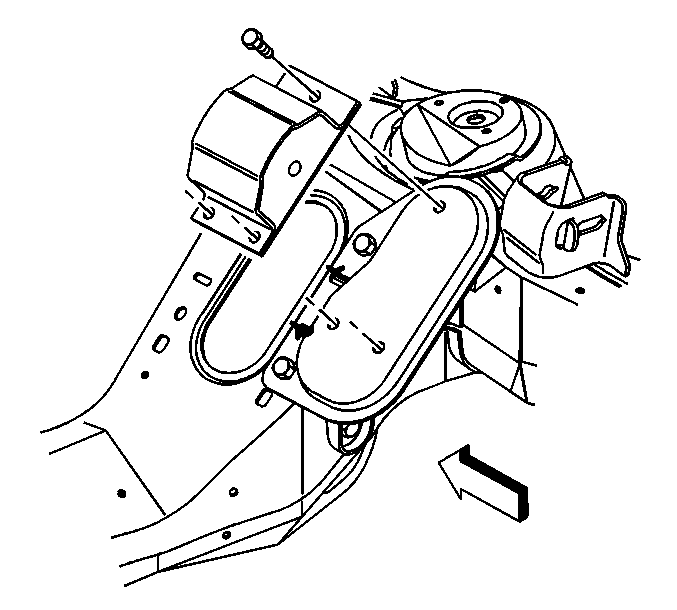Removal Procedure
- Disconnect both the battery negative cable from the batteries. Refer to Battery Negative Cable Disconnection and Connection in Engine Electrical.
- Raise the vehicle. Refer to Lifting and Jacking the Vehicle in General Information.
- Remove the starter mounting bolts. The wiring can remain on the starter.
- Secure the starter out of the way.
- Position a suitable pole jack on the right rear corner of the engine block just above starter opening.
- Remove the engine mount through-bolt and the nut.
- Raise the engine only enough to permit removal of the engine mount.
- Remove the bolts retaining the engine mount bracket to the engine block.
- Remove the engine mount bracket.
- Remove the bolts retaining engine mount to the engine mount frame bracket.
- Remove the engine mount.

Notice: Broken engine mountings can cause misalignment of certain drive-train components. Misalignment of drive-train components causes eventual destruction of the drive-train components.
If one engine mount breaks, the rest of the engine mounts will have increased stress put on them. This could cause the rest of the engine mounts to break.Notice: When raising or supporting the engine for any reason, do not use a jack under the oil pan, any sheet metal, or the crankshaft pulley. Lifting the engine in an unapproved manner may cause component damage.
Important: In order to prevent alignment problems do not replace the left and the right engine mounts at the same time. Replace in two separate service procedures.



Installation Procedure
- Install the engine mount to the engine mount frame bracket.
- Install the engine mount bolts.
- Install the engine mount bracket to the engine block.
- Install the bolts retaining the engine mount bracket.
- Lower the engine until the engine mount through-bolt can be inserted.
- Install the engine mount through-bolt and the nut.
- Remove the pole jack from the engine block.
- Install the starter motor.
- Install the starter motor bolts.
- Lower the vehicle.
- Connect both the battery negative cables to the batteries. Refer to Battery Negative Cable Disconnection and Connection in Engine Electrical.

Notice: Use the correct fastener in the correct location. Replacement fasteners must be the correct part number for that application. Fasteners requiring replacement or fasteners requiring the use of thread locking compound or sealant are identified in the service procedure. Do not use paints, lubricants, or corrosion inhibitors on fasteners or fastener joint surfaces unless specified. These coatings affect fastener torque and joint clamping force and may damage the fastener. Use the correct tightening sequence and specifications when installing fasteners in order to avoid damage to parts and systems.
Tighten
Tighten the engine mount bolts to 59 N·m (44 lb ft).

Tighten
Tighten the engine mount bracket bolts to 54 N·m (40 lb ft).

Tighten
Tighten the through-bolt nut to 68 N·m (50 lb ft).

Tighten
Tighten the starter motor bolts 45 N·m (33 lb ft).
